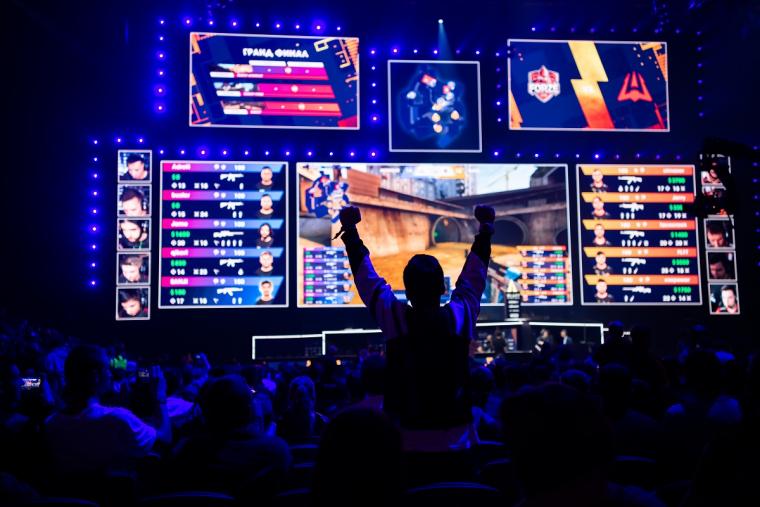
Some seemingly unrelated pieces of sports news emerged in the same week. Put together, though, there’s some great data and some impressive trends to watch.
First, we heard from Betsperts that more than $2 billion is awarded in athletic scholarships for DI and DII schools alone. That’s right – not even counting DIII schools, there’s a big pool of money in scholarships for sports.
Betsperts also analyzed U.S. states for the number of athletic scholarships per 100,000 people, the number of athletic departments and the average athletic scholarship amount to reveal which states are the best for athletic scholarships.
The top 10 list is below:
|
Rank |
|
|
|
|
|
|
|
|
|
|
|
|
|
|
|
|
|
|
|
|
|
|
|
|
|
|
|
|
|
|
|
|
|
|
|
|
|
|
|
|
|
|
(A state-by-state analysis can be found at this link).
Within the same week, the National Federation of State High School Associations let us know esports is the fastest-growing youth sport. In fact, esports programs have spread rapidly in high schools across the country over the last few years and are reaching student populations that had previously been untapped by extracurricular programs of any kind, creating larger, more inclusive campus communities and more successful students.
 In fact, according to the release from NFHS, video games do more than just unite cliques; they provide an accessible competitive venue for students who are willing – but unable – to participate in traditional sports. They also are gender-neutral, allowing boys and girls to participate on the same team or against one another. In other words, that elusive level playing field already exists.
In fact, according to the release from NFHS, video games do more than just unite cliques; they provide an accessible competitive venue for students who are willing – but unable – to participate in traditional sports. They also are gender-neutral, allowing boys and girls to participate on the same team or against one another. In other words, that elusive level playing field already exists.
“What I’ve learned along the way is that esports is an opportunity for everyone, and we’ve had a lot of different kinds of students: kids that come from different countries, kids that have disabilities, that can all participate and compete at a high level,” Chance Mazzia, coach of the Rocky Mountain High School esports team in Colorado told NFHS.
The Colorado High School Activities Association (CHSAA) has tracked student engagement with esports programs ever since the state signed on with PlayVS – the NFHS Network-partnered platform on which varsity esports in the United States are organized – and Rhonda Blanford-Green, former commissioner of the CHSAA, says the results show a greater integration of campus communities and increased student participation across the board.
“I think numbers and data show what it means for our kids, which is continuous growth and continuous engagement with our member schools,” said Blanford-Green. “So, you’re seeing this collective mix of kids that might not have come together in any other way if this opportunity wasn’t offered.”
“Having CHSAA support esports in Colorado is a huge boost for our legitimacy. It brings it to an understandable level for administration and athletic directors,” Mazzia said.
The low cost of maintaining video games versus traditional sports equipment has also made esports ideal across budgetary considerations. And in the pandemic, when many sports programs suffered, it emerged as the breakout star in both high school and college programs, and the darling of rec programs, who wanted to keep students engaged.
In fact, it could be the new high school bass fishing, another nontraditional sport where students can access scholarship money for their skills.
Speaking of which. According to Next College Student Athlete, a platform where high school students can connect with college and university coaches in the hope of obtaining scholarships, there are multiple college esports leagues. More than 175 colleges and universities are members of the National Association of Collegiate Esports (NACE) and offer officially recognized varsity esports programs. These schools have coaches and offer partial or full-ride athletic scholarships.
With few industry rules and regulations, schools are free to participate across the board. Varsity esports teams regularly compete against gaming clubs in tournaments and league play. However, NACE schools officially recognize and support their college esports teams as official varsity-level athletic programs.
Esports athletes can obtain scholarships in a number of games, listed here, and a full listing of colleges offering esports programs can be found at this link.
The fact that esports offer what has become known as “colorblind” participation has been another point of strength. And according to DiverseEducation.com, a new book, Understanding Collegiate Esports: A Practitioner’s Guide to Developing Community and Competition, offers a better understanding of esports, advice on building a programs with equity that support mental health, and shares how esports can amplify the work of Historically Black Colleges and Universities (HBCUs).
“Esports create an amazing opportunity to do things differently and to innovate,” said Dr. Jennifer Hoffman, one of the book’s authors, who is also an associate professor of educational foundations, leadership and policy at the University of Washington. “If you’re thinking about esports on your own campus, I think it’s really an opportunity for us in higher education to do things in new ways.”
Within the past three years, HBCUs have opened their own doors to esports opportunities and growth, and the organization Cxmmunity works to increase participation of minoritized youth in esports. It helped establish an HBCU Esports League competition on Twitch, a game streaming platform.
It may be that in the future, Betsperts will be chronicling esports as a fast-growing area in which student athletes can obtain a scholarship. One thing is for certain: We’re just going to hear more about it.

